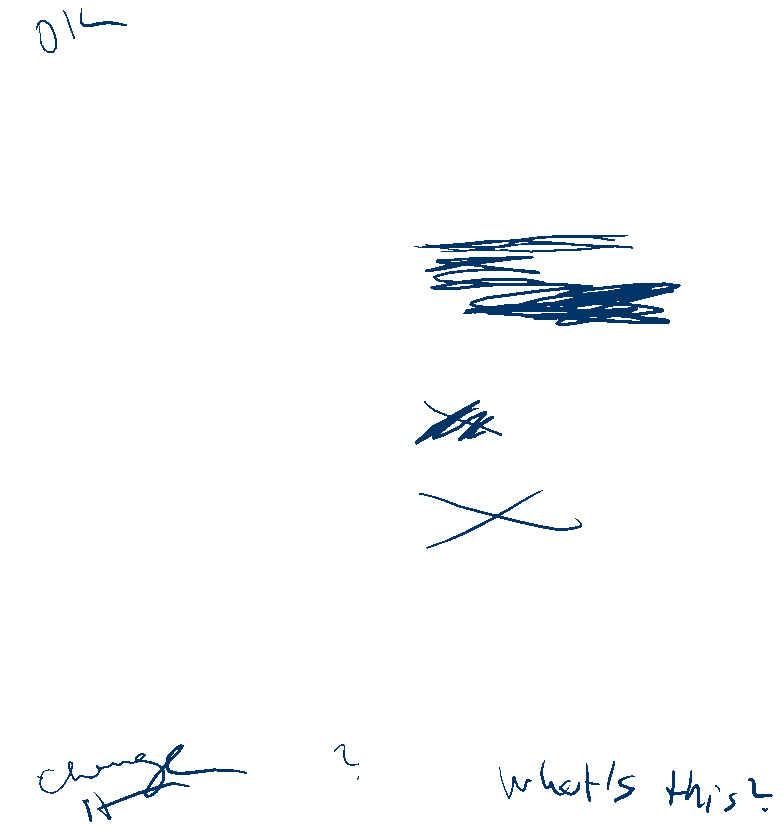Scotland remains one of the world’s top travel destinations. The staggering landscape of Scotland is a heady mix of imposing mountains, wild forests and unspoilt beaches.
Meanwhile, Scottish history’s turbulent tales are veritable, real life episodes of “Game of Thrones.”
No visit to Scotland would be complete without dipping your toe into Scotland’s fascinating history – and what better place to start than the country’s most famous battlefields. In an age when Scotland is reasserting its nationhood, tracing the history of the country’s battles – from Stirling Bridge in 1297 to the Battle of Culloden in 1746 – shows just how hard-fought that identity has been.
1. Stirling Bridge, 1297
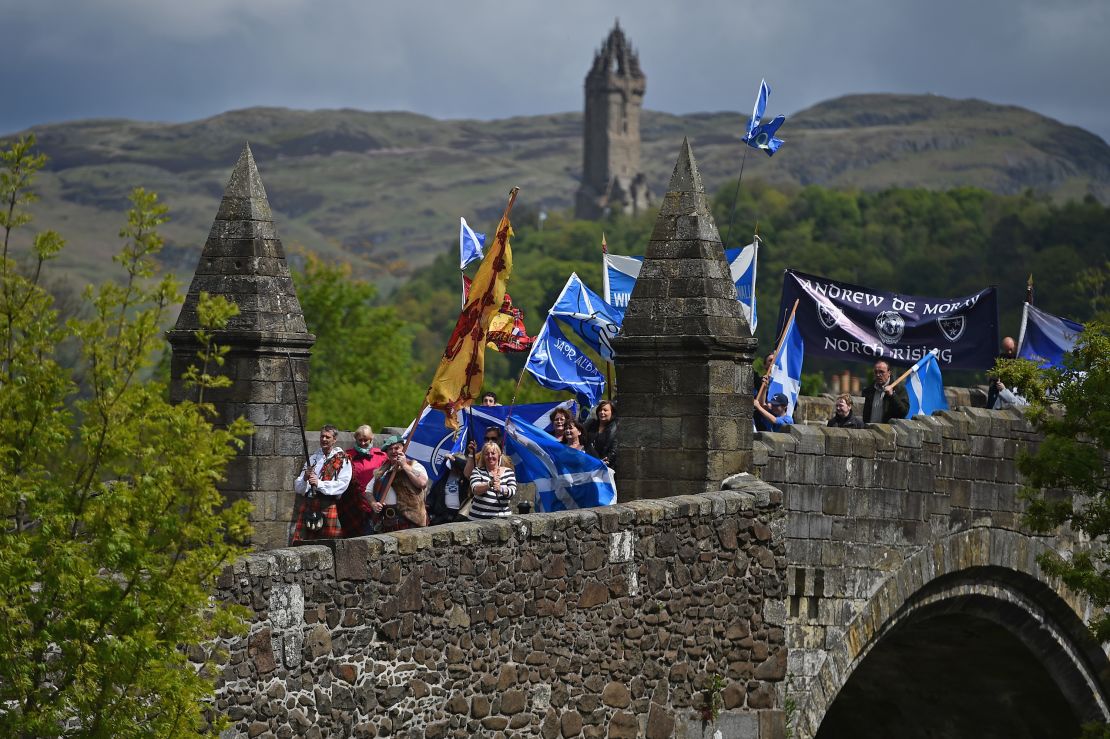
Fans of Mel Gibson’s “Braveheart” will know Stirling as the first great victory for rebellious Scottish landowner William Wallace against the forces of Edward “Longshanks” I of England. But perhaps you didn’t know that Wallace was joint commander with Andrew Murray (no, not that one!). Murray or Moray was the head of a powerful Scottish family, who had raised the flag of rebellion the previous year.
Stirling was arguably more Murray’s victory than Wallace’s – but he had no chance to enjoy it, receiving a mortal wound and dying shortly afterward.
Murray isn’t mentioned in Braveheart, but that’s not the film’s most ludicrous omission.
The masterstroke that won Stirling for the Scots was a tactic that involved waiting until the vanguard of the English army had crossed a narrow wooden bridge, then storming forward, trapping them and cutting it to pieces. The English commander ordered the bridge destroyed and consigned half his army to oblivion.
In “Braveheart,: the battle is won by the convenient invention of the schiltron (cluster of spears) to fend off cavalry. In fact, schiltrons had been around for centuries. And the film’s version of Stirling? Not a bridge to be seen.
Today
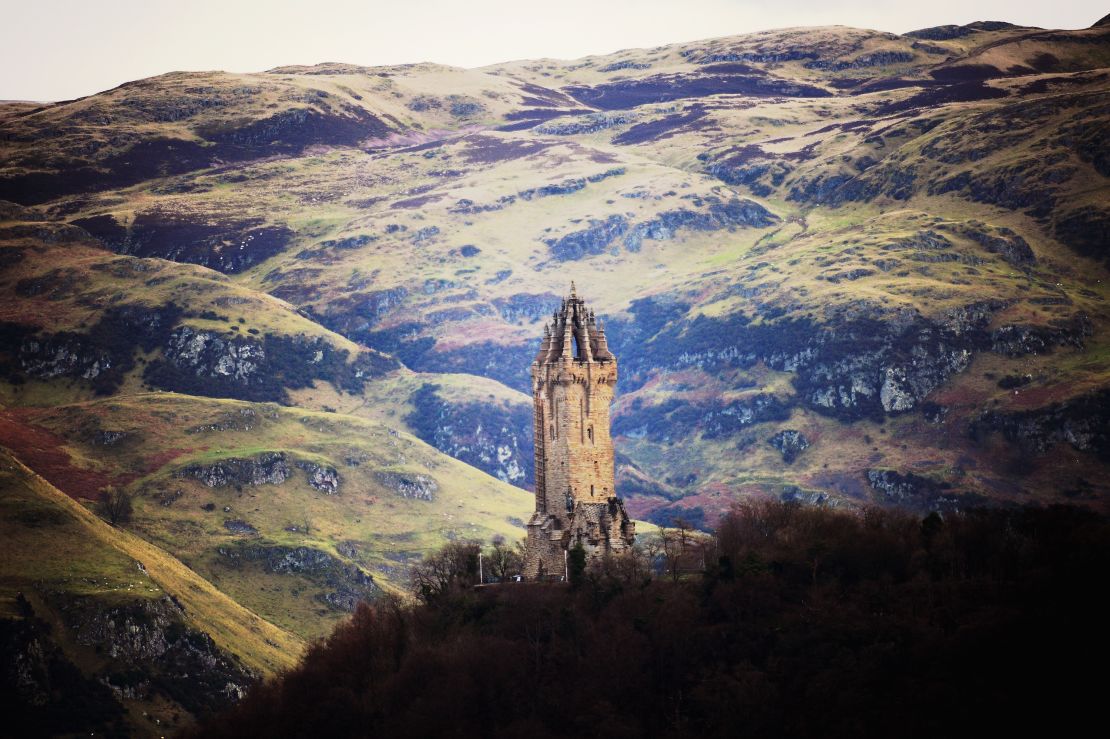
The best place to survey the landscape around Stirling is to climb to the Wallace Monument, a 19th-century tower commemorating the Guardian of Scotland, a title also given to the overlooked Murray.
In recent years, history buffs have been championing more recognition for Andrew Murray and a new monument is now in the works for Stirling. Upon completion, this landmark will showcase Wallace and Murray standing alongside one another in victory. The majority of the battlefield is now under modern Stirling.
Visitors to the majestic Stirling Castle will also be rewarded with a splendid view of the Wallace Monument against the heather-covered hills.
Where to find it: Stirling Bridge is an hour’s drive west of Edinburgh along the M9. It is also reachable in an hour from Glasgow Airport.
2. Falkirk, 1298
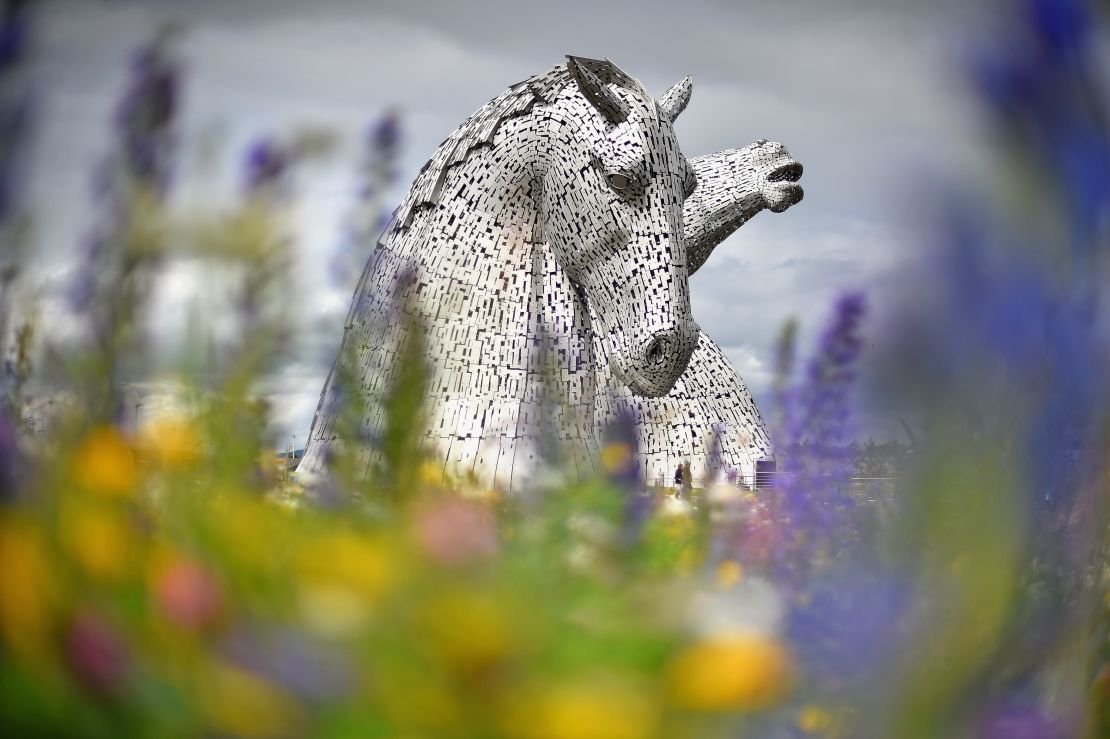
After a year of employing hit-and-run warfare against an increasingly strengthened English army, the Scots stood their ground. Wallace wanted a night-raid, but was overruled – the battle would take place on open land, in daylight. Wallace chose a defensive position and arranged his pikemen, archers and knights.
The English mounted knights charged, driving Scottish horses away but failing to penetrate the four great schiltrons of foot soldiers.
In “Braveheart,” the Scots lose because some of their noblemen (including Robert the Bruce himself) betray Wallace. The truth appears to be more prosaic: isolated and unable to escape, the schiltrons were riddled with English arrows until they fell apart.
Wallace fled, resigned as Guardian of Scotland and largely disappeared from historical records until his capture in 1305. Following his trial in August, he was executed (contemporary reports had him dragged naked behind a horse and then hanged, drawn and quartered) in a manner that makes the film look positively restrained.
Today
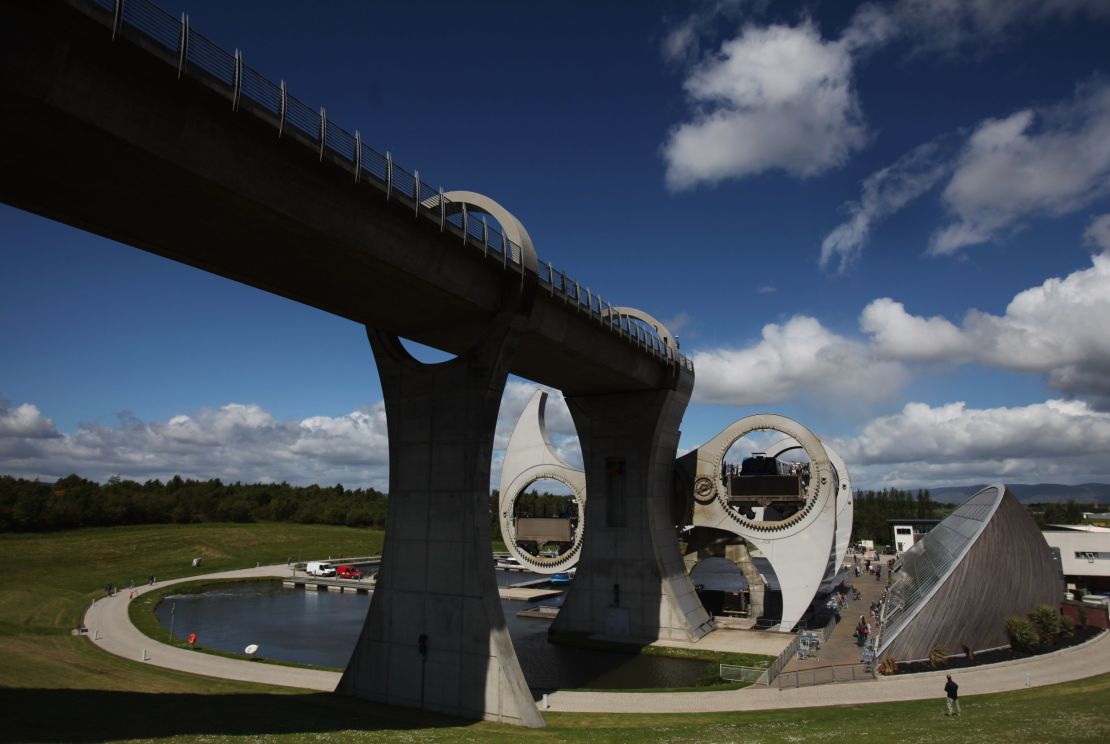
Nobody knows exactly where the battle of Falkirk took place – many sites have been suggested around the modern town, halfway between Edinburgh and Glasgow.
It’s possible future archaeological investigations will find remnants of the battle, but for now it’s a mystery.
Beyond hunting for arrowheads, the best reasons to visit the town today are the marvel of engineering known as the Falkirk Wheel and the Falkirk Kelpies: the mythical-beasts-turned-award-winning-sculptures.
Where to find it: Falkirk is an hour’s drive west of Edinburgh along the M9 and easily reachable from both Edinburgh and Glasgow airports.
3. Bannockburn, 1314
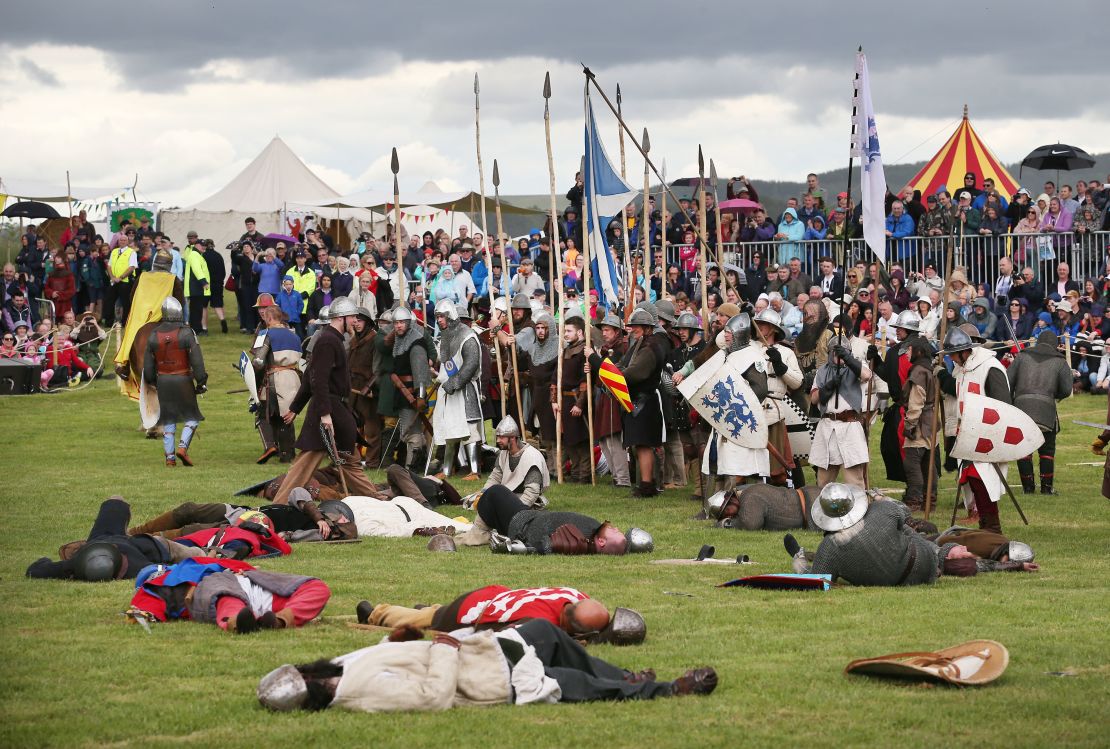
Following Wallace’s defeat at Falkirk, the title of Guardian of Scotland shifted to Robert the Bruce, who in 1306 was crowned King of Scots.
Despite (or because of) this national display of solidarity, the English continued to push for dominance. Robert switched to guerrilla tactics, biding his time until the conditions were right to meet the English head on.
In June 1314, the English garrison in Stirling announced that it would surrender to the Scots if it wasn’t reinforced by the 24th of the month. Edward II sent 13,000 troops marching north and Bruce’s army met them by the Bannockburn – the snaking waterway that proved to be Edward’s undoing. His schiltrons had learned from Falkirk.
Moving in tight formation, they fended off English horsemen on the first day of battle and punched a great hole in Edward’s forces the next day, penning them against the waterway. It was enough to break English morale and win the day.
It would take another decade for England to formally recognize Scottish independence – and that treaty would soon crumble into the second Scottish war of Independence beginning in 1332.
Today
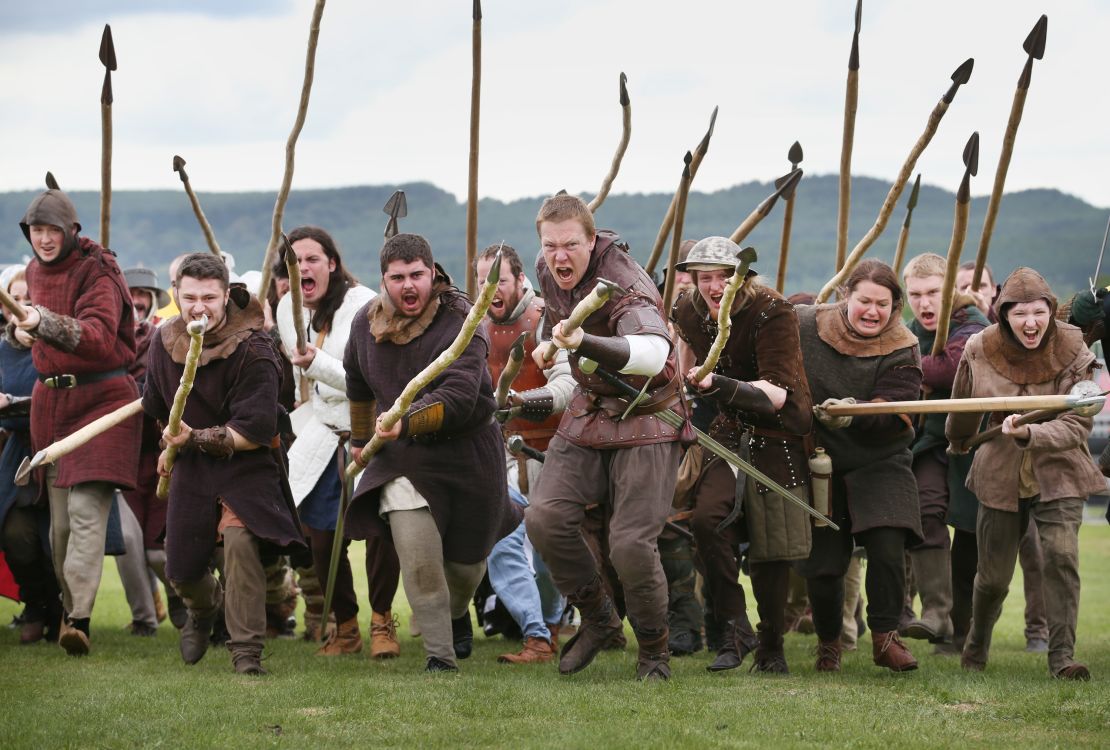
Like Falkirk, the location of the Bannockburn battlefield is lost to us. However, this historical site, which celebrated its 700th anniversary in 2014, remains a must-visit Scottish site.
The Battle of Bannockburn Experience asks the question “How do you tell the Bannockburn story in the absence of any archaeological evidence?”
The answer? 3D technology. Visitors to Bannockburn can stand shoulder-to-shoulder with Scottish warriors, thanks to motion capture marvels. Tickets can be booked online.
Where to find it: Bannockburn is two miles southeast of Stirling. Turn off the M80/M9 at junction 9, on A872.
4. Killiecrankie, 1689
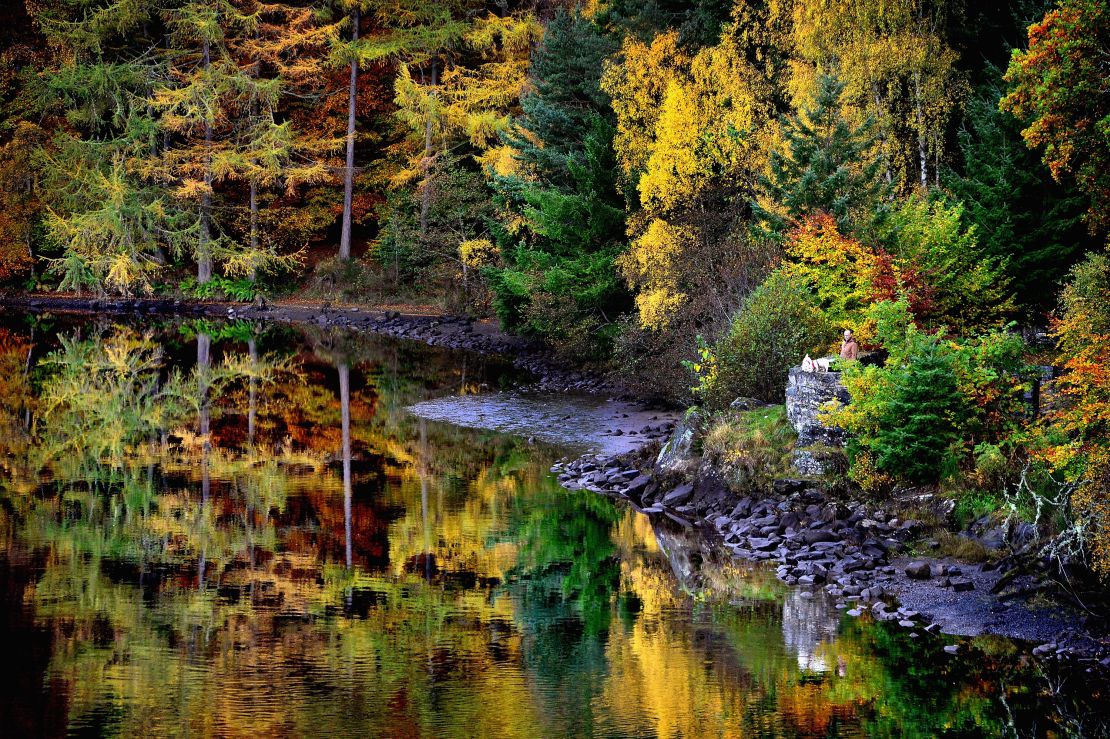
By the 17th century, England and Scotland were ruled by one king. In 1685, Charles II of England was succeeded by James II, a Roman Catholic.
A new Catholic dynasty for the throne of England and Scotland seemed certain, infuriating the Protestant population, so they implored William of Orange (Netherlands), husband of James’s daughter Mary, to cross the English Channel and take the throne. By 1689, this “Glorious Revolution” had taken place – but for many of James’ supporters, the battle was far from over.
Leading the Jacobites in Scotland (“Jacob” is Latin for James) was Viscount Dundee, John Graham of Claverhouse. He gathered a force of 2,400 men including 240 Cameron highlanders, and engaged the government forces of General Hugh Mackay north of the steep wooded gorge of Killiecrankie.
Dundee lined his men up on a ridge and waited for favorable light late in the day, before sending his Camerons rushing down in the famous “highland charge,” too fast for the government troops to fix their bayonets.
It was a rout: 2,000 of Mackay’s 3,500 men were killed, and the rest fled – but tragically for the Jacobites, Dundee was fatally wounded by a random musket ball. Without its dynamic leader, the movement lost momentum and never recovered.
Today
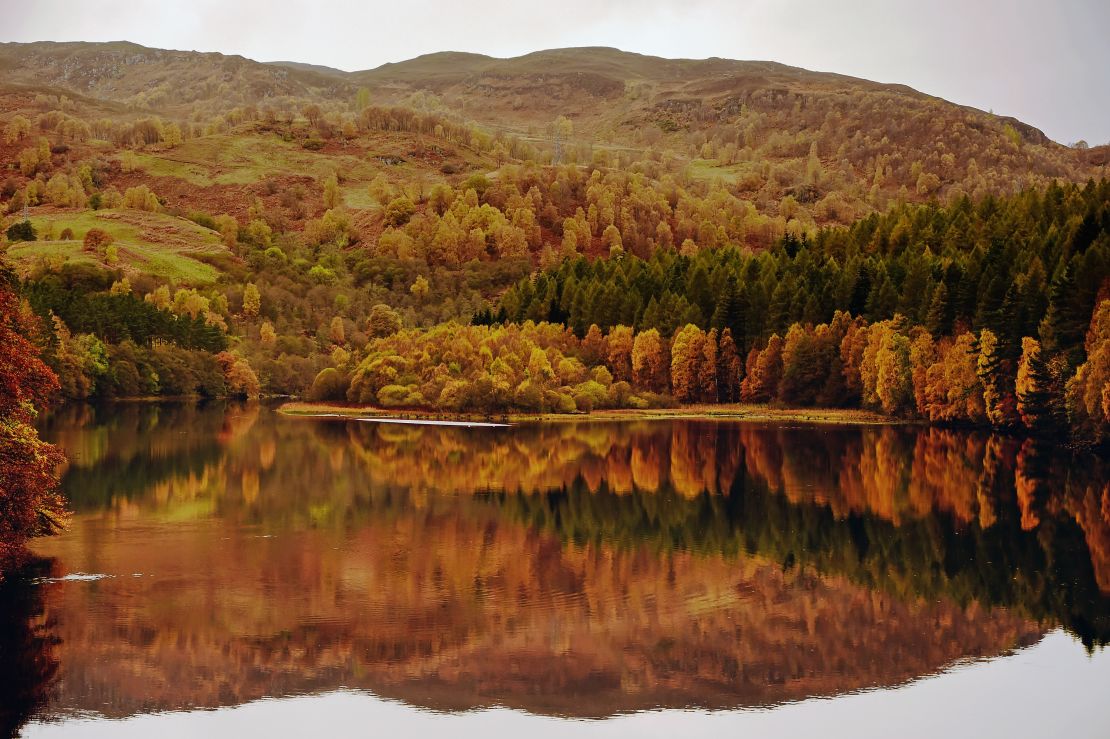
The Pass of Killiecrankie, a great cleft worn through the mountains north of Pitlochry, covered in ancient woodland and defined by a river, is a beautiful part of Scotland and ideally positioned for exploring the highlands. The Killiecrankie Visitor Centre is open (free entry) from April until October.
Where to find it: Killiecrankie is three miles from well-connected Pitlochry, which is less than two hours by train from Edinburgh. Pitlochry-Killicrankie is served by bus, although the area is covered in walking trails.
5. Glencoe, 1692
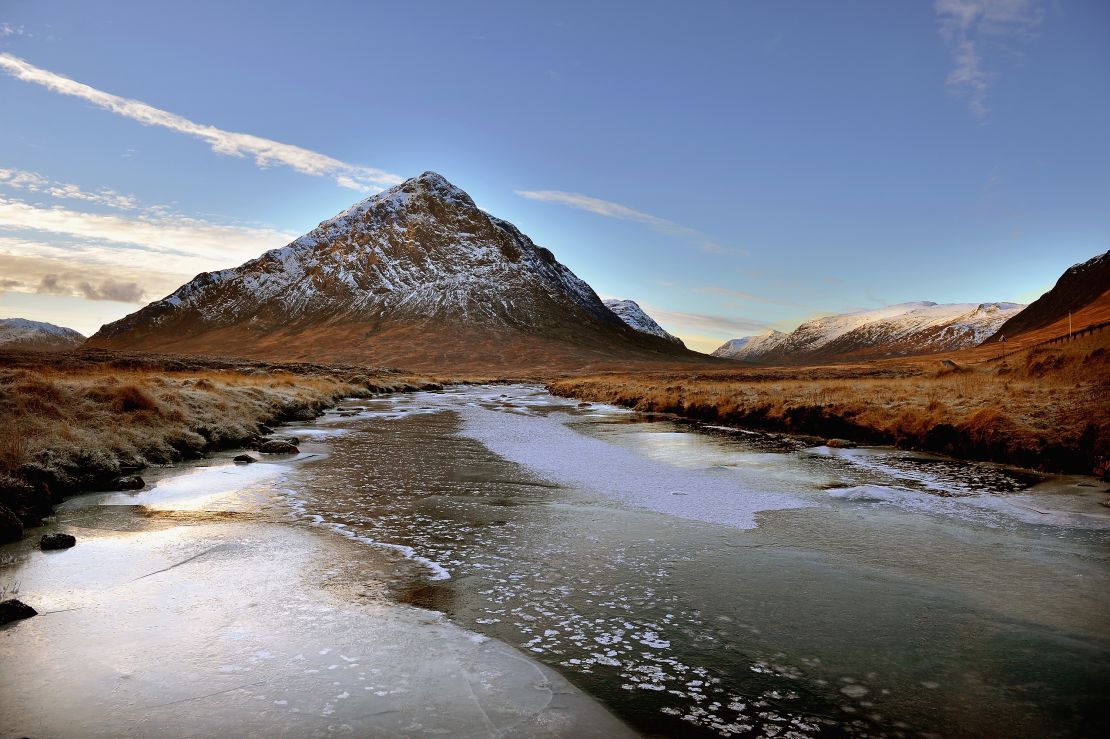
A bloody past, but a promising tourism future. Less a battle than a massacre, the events of February 13, 1692, are among the most infamous in Scottish history.
Following the defeat of the Jacobites, William sought pledges of allegiance from the Scottish clans, ordering them to appear before a magistrate before January 1, 1692.
Because of foul weather and treachery, Alasdair Maclain of Glen Coe’s clan MacDonald was nearly a week late in signing. His enemies, including John Dalrymple, Scotland’s secretary of state, and senior members of the clan Campbell, contrived a plot to destroy him. They announced Maclain’s signature was irregular, proclaimed the MacDonalds untrustworthy, and secretly plotted their execution.
On February 12, secret orders arrived for troops enjoying the hospitality of the MacDonalds: “You are hereby ordered to fall upon the rebels … and put all to the sword under 70.” The next day, 38 MacDonalds were killed by their guests.
Under Scots law this was the heinous crime of “murder under trust,” and a subsequent inquiry found Dalrymple to blame. But thanks to William’s reluctance to pursue the matter, he and all his co-conspirators managed to escape punishment.
Today
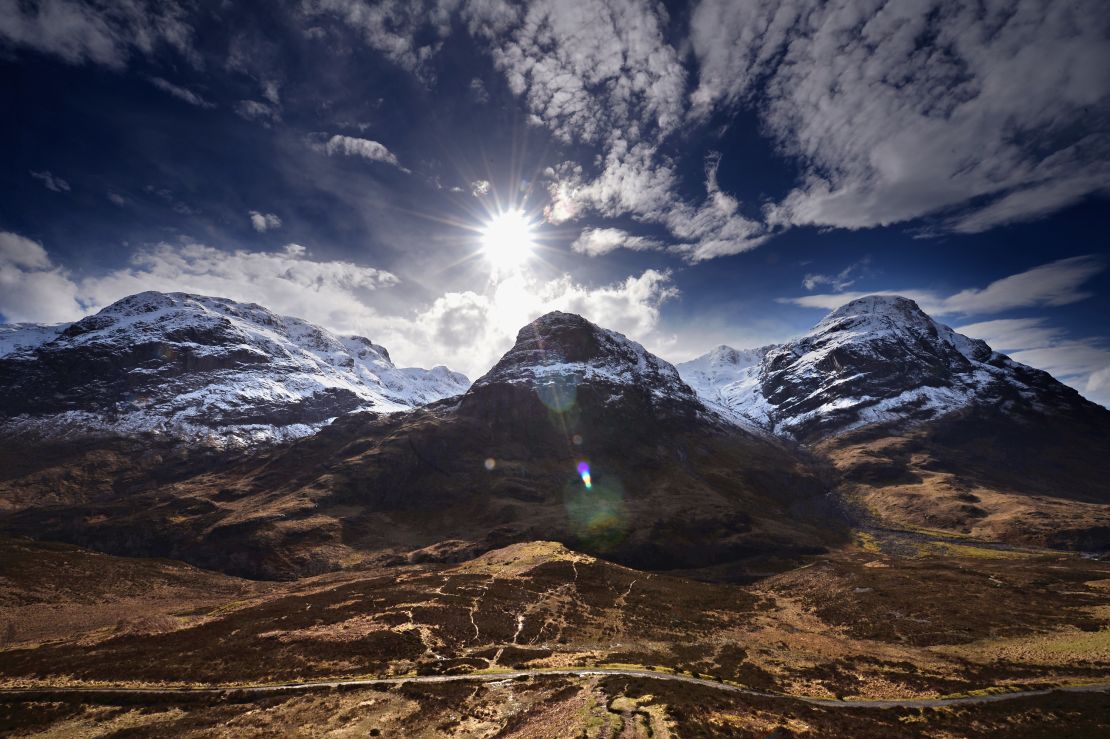
Glen Coe is one of Scotland’s most famous beauty spots: perfect for climbing, exploring, skiing – and escaping from Bond villains. It is here, and nearby Glen Etive, that Daniel Craig’s Bond and Judi Dench’s M retreat to in the movie “Skyfall.”
Why not follow in their footsteps? Weave through the mist to Glen Coe, park up your Rolls Royce, look up at the mountains and let your jaw drop. In Glen Coe, you can stay in the glen itself at the Mountain Resort or in an area hotel – or you can base yourself in nearby Fort William or Fort Augustus, for gateways to the Western Isles.
Where to find it: Glen Coe is just under three hours by car from Edinburgh and just over two hours from Glasgow. The perfect pit stop on a journey to the islands.
6. Culloden, 1746

The events at Glen Coe lingered long in the memory of the Scots, and by 1745 they had found a champion for their anti-British dissent: Charles Edward Stuart, better known as “Bonnie Prince Charlie.”
After an unsuccessful attempt to seize and hold northern England, Charles took his army north into Scotland, winning a major battle at Falkirk and besieging Stirling Castle before reinforcements arrived.
Running low on money and resources, Charles chose to face the British at Drumossie Moor, near Inverness. Each side chose different tactics: the Government troops relied on their firearms while the Jacobites used the highland charge – a brave but inappropriate tactic for open marshy ground.
Within the hour, 1,500-2,000 Jacobites lay dead or wounded and thanks to the order “give no quarter,” those wounded would be put to death in the grim hours and days that followed.
The aftermath of Culloden was tragic: a British campaign of suppression that oppressed Scotland under British rule, stripping Scottish landowners of their rights and banning the unregulated use of tartan.
Today
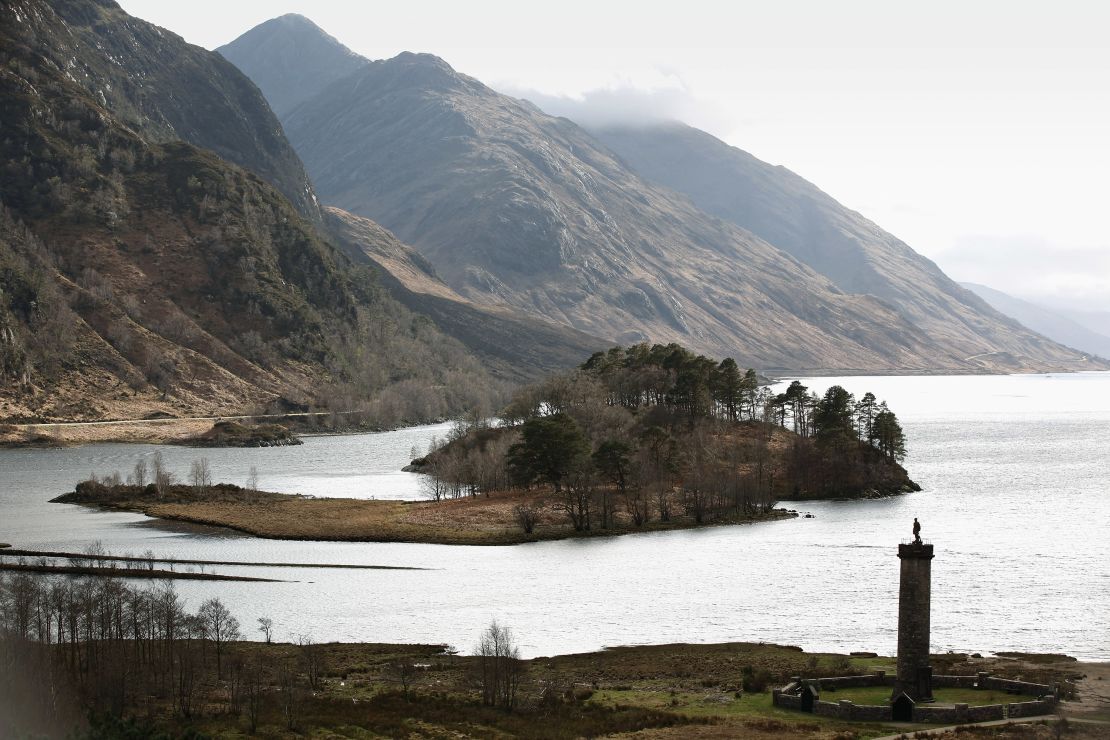
Culloden is one of Scotland’s most emotionally affecting monuments – a bleak stretch of scrub moorland 10 minutes out of Inverness, largely bare except for a new Visitor Centre (opened in 2007) and the headstones and memorial cairn erected by local landowner Duncan Forbes in 1881.
It serves as a reminder both of the historical wrongs inflicted upon Scottish culture and its ultimate resilience in the face of adversity.
It is also worth venturing West to visit Glenfinnan, the site at which Bonnie Prince Charlie raised his Royal Standard and began the Jacobite uprising. The Glenfinnan Monument is situated at the edge of Loch Shiel in the Lochaber area of the Highlands.
In recent years, the location has also gained notoriety as the Black Lake in the “Harry Potter” films. Also in the series nearby Glenfinnan Viaduct, the famous Victorian engineering marvel, is crossed biannually by the Hogwarts Express.
Where to find it: Culloden is just outside Inverness, a three-hour drive north of Edinburgh and regularly served by a train service that also goes through Pitlochry.
Mike Sowden is a travel writer and story-telling consultant.
Francesca Street is a London-based journalist, writing features with a focus on travel, arts and culture.
Editor’s note: This article was previously published in 2013. It was reformatted, updated and republished in 2017.


